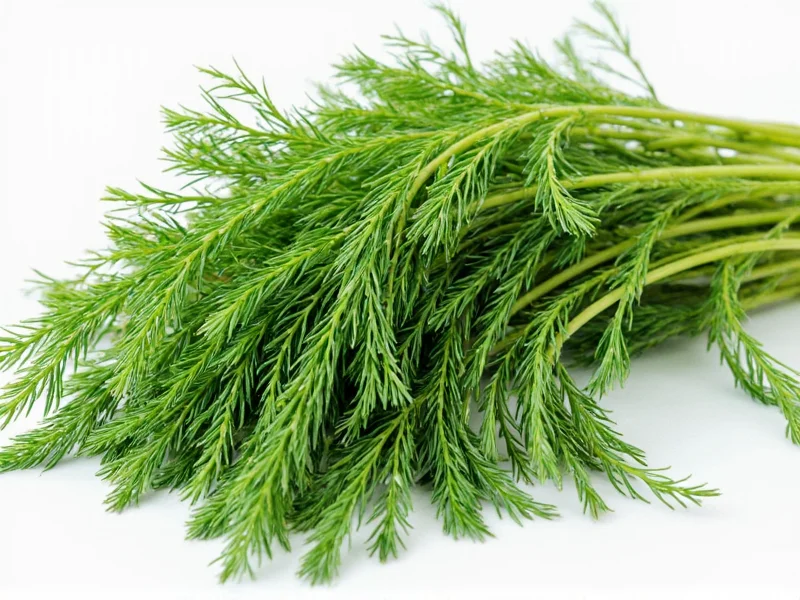Identifying herbs that resemble dill is crucial for both gardeners and foragers. Mistaking toxic plants for edible dill can have serious consequences, while correctly identifying similar herbs expands your culinary and gardening options. This guide provides clear, practical information to help you confidently distinguish dill from its botanical twins.
Why Proper Herb Identification Matters
When foraging or gardening, confusing dill with similar-looking plants could lead to accidental poisoning or wasted harvest. Some dill look-alikes like poison hemlock contain deadly toxins, while others like fennel offer different culinary benefits. Understanding the subtle differences ensures your safety and enhances your herb-growing success.
Common Herbs That Resemble Dill
Dill's feathery foliage makes it resemble several other umbelliferous plants (members of the Apiaceae family). Let's examine each look-alike with precise identification markers.
Fennel (Foeniculum vulgare)
Fennel shares dill's delicate, feathery leaves but has important distinguishing features. While both plants have similar growth habits, fennel typically grows taller (up to 6 feet) with a thicker, more robust stem. The most reliable difference is scent: fennel emits a strong anise or licorice aroma when crushed, whereas dill has a more citrusy, grassy fragrance. Fennel flowers are also typically larger and more golden-yellow than dill's yellow blooms.
Caraway (Carum carvi)
Caraway's fern-like leaves can resemble young dill plants, but careful observation reveals key differences. Caraway has a more upright growth habit with less feathery foliage. The leaves grow in opposite pairs along the stem rather than the alternate arrangement seen in dill. When crushed, caraway leaves release a distinctive caraway seed scent, quite different from dill's aroma. Caraway also develops a prominent taproot, unlike dill's fibrous root system.
Anise (Pimpinella anisum)
Anise shares the feathery leaf structure with dill but has several distinguishing characteristics. Anise plants are generally smaller (12-24 inches tall) with more delicate, lacy foliage. The most reliable identifier is the scent test: anise emits a powerful licorice fragrance when leaves are crushed, while dill has a more subtle, tangy aroma. Anise flowers are also smaller and more densely clustered than dill's characteristic umbrella-shaped flower clusters.
Angelica (Angelica archangelica)
Angelica's large, compound leaves can resemble dill when the plant is young. However, mature angelica grows much larger (up to 6 feet tall) with thicker, more robust stems. Angelica stems often have a purplish hue and distinctive ridges, unlike dill's smooth green stems. The flowers form larger, more spherical umbels compared to dill's flatter clusters. Angelica has a unique earthy, celery-like scent that differs significantly from dill's characteristic fragrance.
| Herb | Leaf Structure | Stem Characteristics | Scent | Flower Appearance |
|---|---|---|---|---|
| Dill | Feathery, thread-like, blue-green | Smooth, hollow, light green | Tangy, grassy, citrus notes | Yellow, flat umbels |
| Fennel | Finer, more delicate, brighter green | Thicker, solid, bluish-green | Strong anise/licorice | Golden yellow, larger umbels |
| Poison Hemlock | Triangular, coarsely toothed | Purple-spotted, hairless | Musty, unpleasant | White, irregular umbels |
| Wild Carrot | Finely divided, hairy | Hairy, solid | Carrot-like | White, flat umbels with dark center |
Critical Safety Information: Poisonous Look-Alikes
Among herbs that look like dill, poison hemlock (Conium maculatum) poses the most serious risk. This highly toxic plant contains coniine, which can be fatal even in small quantities. Key identification markers include:
- Purple or reddish blotches on the stem (absent in true dill)
- Musty, unpleasant odor (unlike dill's pleasant fragrance)
- White flowers arranged in irregular umbels
- Smooth, hollow stems with distinctive purple mottling
Wild carrot (Queen Anne's lace) is another common dill look-alike that's generally safe but can be confused with poison hemlock. Wild carrot has hairy stems (unlike smooth-stemmed dill) and typically features a single dark purple flower in the center of its white umbel.
Practical Identification Techniques
When trying to identify herbs that look like dill, use these reliable field identification methods:
Stem Examination
Carefully inspect the stem structure. Dill has smooth, hollow, light green stems without any purple markings. Poison hemlock's purple-spotted stems provide the most critical safety distinction. Fennel stems are thicker and more solid than dill's.
Leaf Structure Analysis
Examine the leaf arrangement and texture. Dill leaves are alternate, feathery, and thread-like with a blue-green hue. Caraway leaves grow in opposite pairs and are less finely divided. Poison hemlock leaves are triangular with coarsely toothed edges.
The Scent Test
This is often the most reliable differentiator. Crush a small leaf between your fingers:
- Dill: Releases a distinctive tangy, grassy aroma with citrus notes
- Fennel/Anise: Strong licorice or anise scent
- Poison Hemlock: Unpleasant, musty odor often described as mouse-like
- Wild Carrot: Distinctive carrot-like fragrance
Flower Observation
When plants are flowering, examine the umbel structure. Dill produces flat-topped yellow flower clusters. Fennel flowers are more golden and form larger umbels. Poison hemlock has white flowers in irregular clusters, while wild carrot features white flowers with a characteristic dark center.
When Look-Alikes Can Be Used
Not all dill look-alikes are problematic—some offer valuable culinary alternatives. Fennel fronds make an excellent dill substitute in fish dishes and salads, providing a similar texture with a more pronounced anise flavor. Caraway leaves work well in rye bread recipes and certain European dishes. However, always positively identify plants before consumption, and never substitute for dill when foraging wild specimens unless you're 100% certain of the identification.
Final Safety Recommendations
When working with herbs that look like dill, follow these safety protocols:
- Always perform multiple identification tests (stem, leaf, scent, flower)
- When in doubt, don't consume—consult an expert or reliable field guide
- Teach children the differences between edible herbs and toxic look-alikes
- Consider photographing plants for later identification by experts
- Never rely on a single characteristic for identification











 浙公网安备
33010002000092号
浙公网安备
33010002000092号 浙B2-20120091-4
浙B2-20120091-4